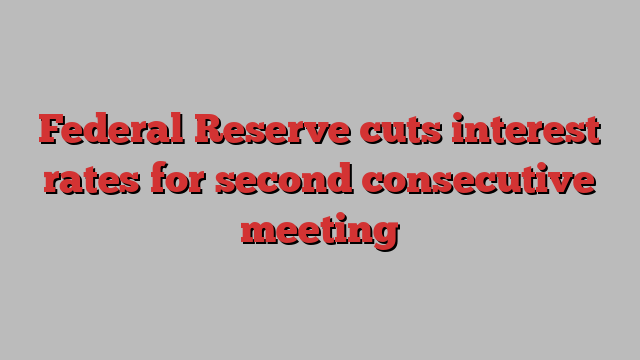
Unlock the White House Watch newsletter for free
Your guide to what the 2024 US election means for Washington and the world
The Federal Reserve cut its benchmark interest rate by a quarter-point amid uncertainty about the outlook for the world’s largest economy following Donald Trump’s decisive victory in the US presidential election.
The unanimous decision lowered the target range to 4.5-4.75 per cent and marked a downshift in the pace from September’s half-point cut, which rate-setters made to stave off weakness in the US jobs market.
In a statement on Thursday, the Federal Open Market Committee said that the economy was expanding at a “solid pace” even as labour market conditions had “generally eased” compared with earlier in the year.
The FOMC continued to characterise inflation as “somewhat elevated”, affirming that the risks to achieving both low, stable inflation and a healthy jobs market were “roughly in balance”.
The Fed’s two-day meeting started on Wednesday, a day later than usual due to Tuesday’s US election, in which the Republicans trounced Democrats.
Trump has proposed sweeping tariffs, mass deportations of immigrants and extensive deregulation in addition to lower taxes for the wealthy and businesses.
While stock markets have soared on expectations of bigger corporate profits, economists say the president-elect’s plans risk not only higher inflation, but also slower growth.
Fed chair Jay Powell refused to be drawn on how the central bank would respond to the next administration, saying that it was too early to judge what the substance of the Trump government’s economic policies would be.
“We don’t guess, we don’t speculate, and we don’t assume,” Powell said at his post-meeting press conference.
In addition to clinching the White House, Republicans captured the Senate and could hold a majority of seats in the House of Representatives too.
While the US central bank is an independent institution, the president-elect lambasted rate-setters for not cutting borrowing costs swiftly enough during his first term.
Trump will have the opportunity to nominate a new chair once Powell’s term ends in May 2026, with only one other seat on the seven-seat board of governors coming up between now and the end of his second term.
The initial market reaction to the Fed decision was relatively muted, with the S&P 500 holding on to earlier gains of 0.6 per cent.
The policy-sensitive two-year yield on US Treasuries fell by 0.04 percentage points to 4.23 per cent after the announcement, while the benchmark 10-year yield was 0.06 percentage points lower at 4.36 per cent. Those moves marked a partial reversal of a sharp rise in the US government’s cost of borrowing a day earlier, as bonds sold off following Trump’s victory.
Fed officials are debating how quickly to lower interest rates to a “neutral” setting that neither boosts nor suppresses demand, while keeping inflation steady at the central bank’s 2 per cent goal.
Inflation has fallen dramatically since peaking at about 7 per cent and is now close to 2 per cent. The labour market has cooled off but stayed solid — defying expectations of a more substantive slowdown.
Economists said October’s jobs report, which showed employment growing by just 12,000 positions, was an aberration, reflecting distortions stemming from two hurricanes and labour strikes.
The Fed has opted against providing specific guidance about what will happen to rates next — saying it will act on the data.
Additional reporting by Harriet Clarfelt in New York